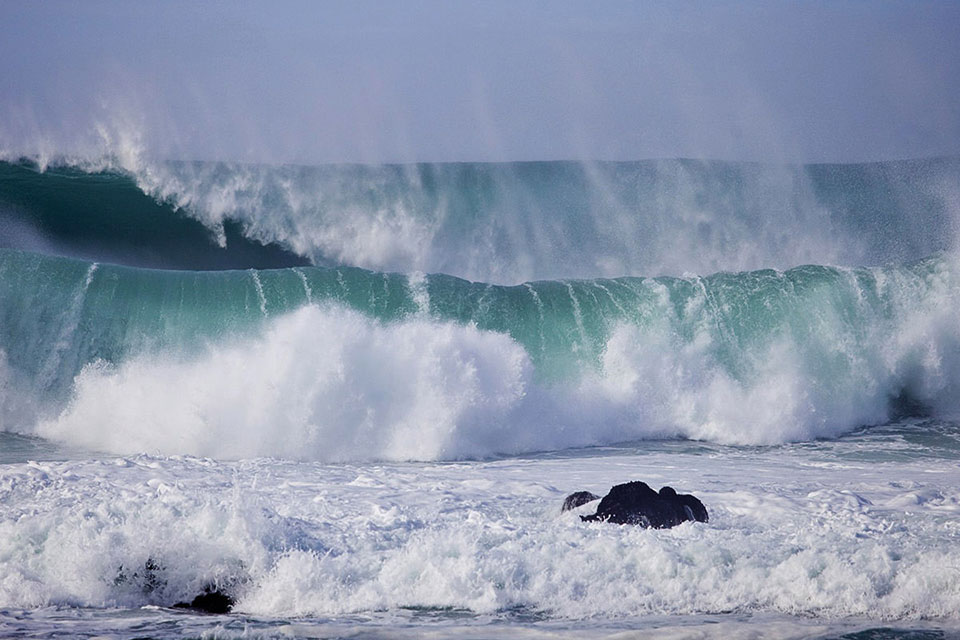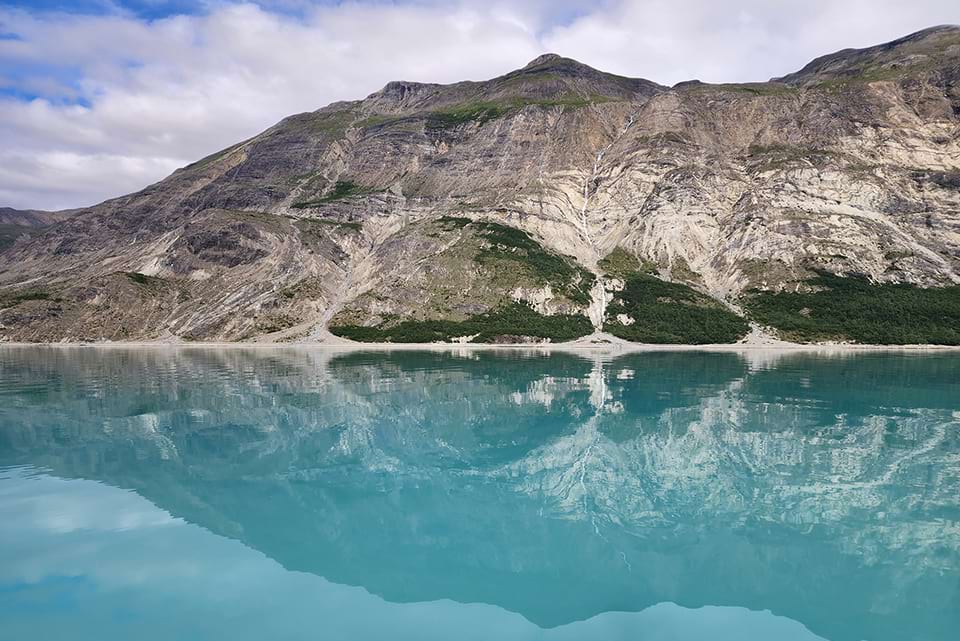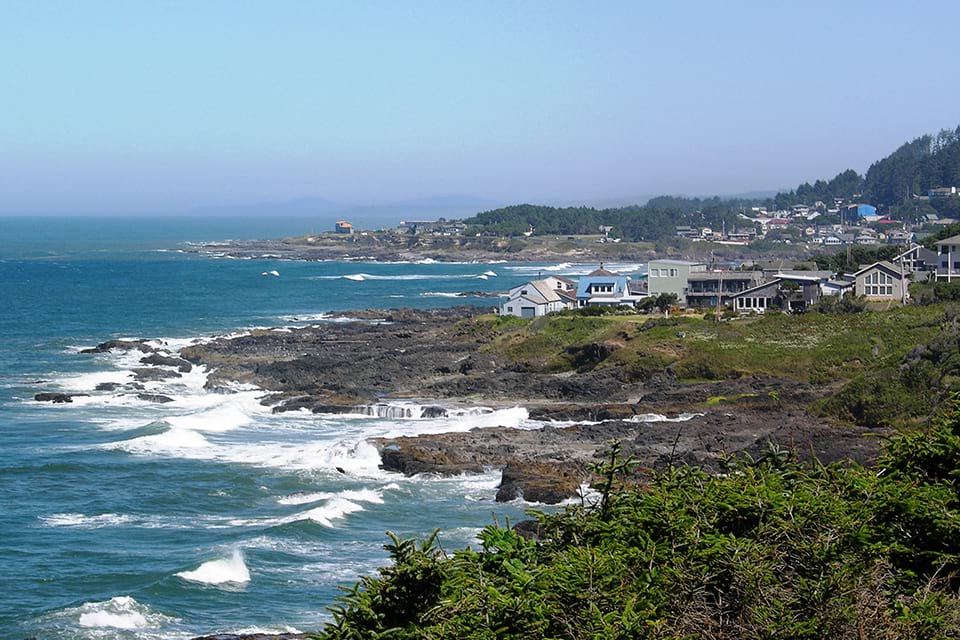NOAA Ocean-Based Climate Resilience
Accelerators Themes
Identifying the challenges and market opportunities for small businesses and entrepreneurs commercializing ocean, coastal, and Great Lakes-based climate solutions
In August 2023, NOAA held four internal meetings to identify the major issues, challenges, gaps, and/or problem statements facing the theme areas associated with NOAA’s Ocean-Based Climate Resilience Accelerators funding opportunity. NOAA’s goal is to support small businesses and entrepreneurs commercializing ocean, coastal, Great Lakes-based climate solutions, particularly those addressing the theme areas of: (1) Ocean Renewable Energy; (2) Coastal and Ocean Carbon Sequestration Monitoring and Accounting; (3) Hazard Mitigation and Coastal Resilience; and (4) Ecosystems Services.
NOAA will use the challenges identified below to guide the focus of the funded accelerator entities. More information about the Climate Resilience Accelerators funding opportunity can be found here.
Theme 1. Ocean Renewable Energy
Developing the tools and information services to enable safe, sustainable, inclusive, and informed ocean renewable energy
Climate resilience will require the development of ocean observation technologies and information services to support siting, construction, and operation of ocean renewable energy resources. These technologies are also necessary to support forward-looking analyses, science, and research to ensure ocean renewable energy progresses in tandem with biodiversity protection, and ocean co-use. For the purpose of this funding opportunity, offshore wind accelerators will focus on the predictive timescales of days-to-weeks, rather than timescales of months, years, or decades. This effort should not support the development of energy technologies themselves but rather the tools and information services that enable sustainable, safe, inclusive and informed ocean energy development.
Major Needs and Gaps:
Observation instrumentation and data utilization. New and/or improved instrumentation to enhance oceanic and atmospheric observations are needed to survey offshore wind farm areas in order to understand impacts. Additionally, these instruments need to be placed on ocean energy structures in order to better gather observations, particularly with regards to planetary boundary layer, marine species, ecosystems, and fisheries observations. Quality Assurance/Quality Control (QA/QC) and data assimilation systems also need to be in place to ensure these data support models, tools, and/or information services.
Impact studies. Robust environmental impact studies and stock assessments are needed, particularly as they relate to mitigating impacts on fisheries, marine species, and ecosystems.
Mapping of benthic environments. Maps characterizing and representing the distribution and extent of benthic habitats are valuable tools for improving understanding of ecosystem patterns and processes, and promoting scientifically-sound management decisions, and are largely missing. The mapping of benthic environments requires a lot of infrastructure and presents an opportunity for small businesses to develop this information and/or infrastructure.
Power transfer. An immediate short term challenge for ocean renewable energy is the transfer of offshore energy into the onshore grid. Dynamic line reading uses weather conditions to determine how much power can be pushed down a transmission line and presents a unique opportunity for accelerators to develop a public-private partnership to use NOAA’s observations and predictive systems to evaluate, characterize, and predict how much energy can be transmitted. The onshore, above ground distribution systems would greatly benefit from this type of investment.
Transdisciplinary sampling regime. To address the issues and questions that surround the siting, construction, and operation of ocean renewable energy resources, there is an opportunity for developing a public-private partnership where NOAA describes a transdisciplinary sampling regime to address multiple needs (e.g., replacing fisheries surveys loss; understanding noise regimes; habitat changes; and other needs) with funding and deployment done by private entities.

WHAT ARE ACCELERATORS?
Business accelerators are entities that support the development of innovative early- to mid-stage businesses with training, resources, mentorship, and/or funding with the aim of bringing products to market.
WHAT’S NEXT
NOAA, in coordination with the Ocean Enterprise community, will continue to identify and refine the challenges that the Climate Resilience Accelerator awardees will address by sponsoring ongoing dialogues, workshops, and events.
Theme 2. Coastal and Ocean Carbon Sequestration Monitoring and Accounting
Developing the tools and information services needed to measure the effectiveness and monitor the impacts of carbon sequestration and storage

There is growing interest in enhanced natural and engineered sequestration of carbon in the coasts and oceans. To support climate resilience as these initiatives move from pilot to large operational scale, there will be a need for ocean observation and information services that monitor their effectiveness and environmental impact and verify and monitor the quantities of carbon they remove. This effort should not support the development of carbon sequestration technologies themselves but rather the tools and information services that can measure the effectiveness and monitor the impacts of their deployment.
Major Needs and Gaps:
Quantification. All sequestration methodologies will demand careful quantification of the amount of carbon that is captured, removed, and/or stored. However the capacity, technology, infrastructure, translation services, data services, and modeling for effective quantification and monitoring are not currently available or are not accessible at the scales needed. While some technologies have been successfully transferred to industry, the historically small market size has hindered investment and growth in this field. Innovative solutions, such as leverage open source technology development and distributive manufacturing approaches, are needed to overcome this challenge. Additionally, observing systems will need to be designed and implemented at the appropriate scales to assess the success of these methodologies.
Ultimately, small businesses will require access to core information streams to develop bespoke services. These data and information will be critical to provide the evidence of the effectiveness of methodologies and to verify and monitor the quantities of carbon being removed needed to support a viable carbon sequestration market.
Uncertainty. While it would be ideal to understand and quantify exactly how much carbon is captured, removed, and/or stored, the different technologies, approaches, and capabilities will inevitably have different levels of uncertainty. Understanding the uncertainty around quantifying carbon capture and storage is needed, as well as understanding what the market will accept in terms of uncertainty tolerance. To better understand the offshore energy uncertainty tolerance, economics expertise could inform what the fidelity of the science system needs to be, which can be leveraged to co-develop the requirements for the entire value chain.
Regulatory coordination. Conducting the necessary pilot projects and place-based demonstrations will require coordination with state governments, local communities, social scientists, and other entities to gather support and acquire permits. NOAA will leverage the lessons learned from previous funding opportunities to facilitate accelerators making these connections and guiding them through the regulatory processes.
Theme 3. Hazard Mitigation and Coastal Resilience
Providing high resolution, regional observations and modeling products to facilitate climate resilience in coastal communities

To facilitate climate resilience, coastal communities require accurate wind and water level predictions to prepare for and mitigate beach erosion, coastal flooding, and prevent loss of human life. Accurate wind-wave forecasting in enclosed or semi-enclosed basins, nearshore coastal areas, islands, and estuaries require high resolution observations and modeling at a regional scale. These regional scale observations and model products are currently not available to vulnerable coastal communities nationwide; therefore, it is not possible to accurately predict the magnitude or extent of coastal flooding during episodic storms, King tides, and other wind and wave driven events.
Major Needs and Gaps:
Technology. The impact of climate risks in coastal communities is dependent on: (1) the types of hazard being considered; (2) the exposure communities have to particular hazards; and (3) the impact of the hazard. Each of these components will benefit from technology inserts, as would the overcrossing of components. There are market opportunities for private companies to (1) identify coastal hazard gaps; (2) develop and/or improve monitoring technologies to address these gaps; and (3) gather subject matter domain experts to work together to aggregate and balance the coastal hazard risk components. Advances around this could lower the barrier to entry for understanding how these components stitch together, their interrelated dependencies, as well as improve the ability of communities and decision makers to digest the hazard risk and mitigation solutions.
Nature-based infrastructure. Nature-based solutions offer integrative strategies to reduce climate risks, while providing a range of other benefits such as climate regulation, recreation, health, tourism, food and drinking water. Unfortunately, the lack of engineering and economic grounding for nature-based infrastructure has hindered advocacy efforts and the implementation of projects. A wide breadth and depth of opportunities exist with: (1) designing infrastructure; (2) tracking infrastructure performance; (3) better understanding siting; and (4) demonstrating the direct and indirect cost benefits.
Tools. Improved decision support tools are needed for coastal communities and decision makers to better understand and plan for climate-dependent coastal hazards. Impact visualization tools can be very powerful for communication and message delivery, and often outside of the scope of what Federal agencies can develop. For example, risk assessment tools are needed to allow property owners to understand their risk today, in 5 years, and in 10 years.
Theme 4. Ecosystems Services
Providing decision makers with the ability to adapt climate resilience efforts at meaningful spatial and temporal scales

Many decision makers, including natural resource managers, offshore operators, permitting agencies, and others, require the best available science, data, and predictions to reduce uncertainty in decision making processes. Advances in ocean and coastal observation technology, modeling, and analytics are required to accurately assess and forecast ecosystem changes, such as shifts in species location, biological production, biogeochemical regulation, and physical phenomena like marine heat waves or changes in sea level. Improved predictive capabilities will provide natural resource managers and other decision makers with the ability to adapt climate resilience efforts at meaningful spatial and temporal scales.
Major Needs and Gaps:
Private boating observing market. Given the number of vessels on the water and gear put out everyday, the largest untapped source of coastal ocean observations is the fishing, cruise, and boating industry. NOAA has begun partnering with the private boating industry to place observing technologies on these vessels to gather environmental data. There is a potential to scale this opportunity and develop an incentive-driven market to support fishers, cruise liners, and boaters contributing to the ocean, coastal, and Great Lakes observing systems by putting sensors on their vessels and equipment.
Product resolution. Many of the coastal ocean decisions are made at very local scales, however there is a gap between the resolution of the modeling products and environmental products Federal agencies provide and the local resolution where decisions are made. The extension into the local coastal space remains a challenge to address at a Federal agency level without input from these localities. This gap presents an opportunity for private sector innovation to develop products and services at finer resolutions to address local needs.
Tools. Improved decision support tools are needed for natural resource managers and other decision makers to better understand and implement climate resilience efforts at meaningful spatial and temporal scales. Many opportunities exist for the acquisition of data across sources and observing platforms, the QA/QC of data, and the creation of products and/or the integration of data across observing sources. For example, the data processing and image analysis of satellite images for species tracking is an emerging field, and the data visualization of model outputs and development of video games are market opportunities.
Improved observing technologies. Technologies are needed to understand and predict changes in marine ecosystems. In particular, technologies that serve as fleet multipliers, expand area coverage, and/or shore up white boat coverage for a range of species (fish, mammals, sea birds, etc) are. |
Improved ecosystem dynamics. Understanding the synergies of multiple species, how they react/will react to changing ocean conditions, as well as developing solutions for how to mitigate these reactions are gaps that need to be imminently addressed.
Cross-cutting. Connecting Social Sciences, Physical Science, and Technological Advances
Accelerators will weave together the latest social sciences knowledge with technological advancements and cutting edge social sciences to ensure the necessary expertise is leveraged when messaging new tools and services, and to effectively facilitate and improve service delivery and decision support. Understanding how to get the right information to the right people at the right time is critical to ensuring people make the most informed and appropriate decisions.
 Official websites use .gov
A .gov website belongs to an official government organization in the United States.
Official websites use .gov
A .gov website belongs to an official government organization in the United States.
 Secure .gov websites use HTTPS
A lock or https:// means you’ve safely connected to the .gov website. Share sensitive information only on official, secure websites.
Secure .gov websites use HTTPS
A lock or https:// means you’ve safely connected to the .gov website. Share sensitive information only on official, secure websites.




